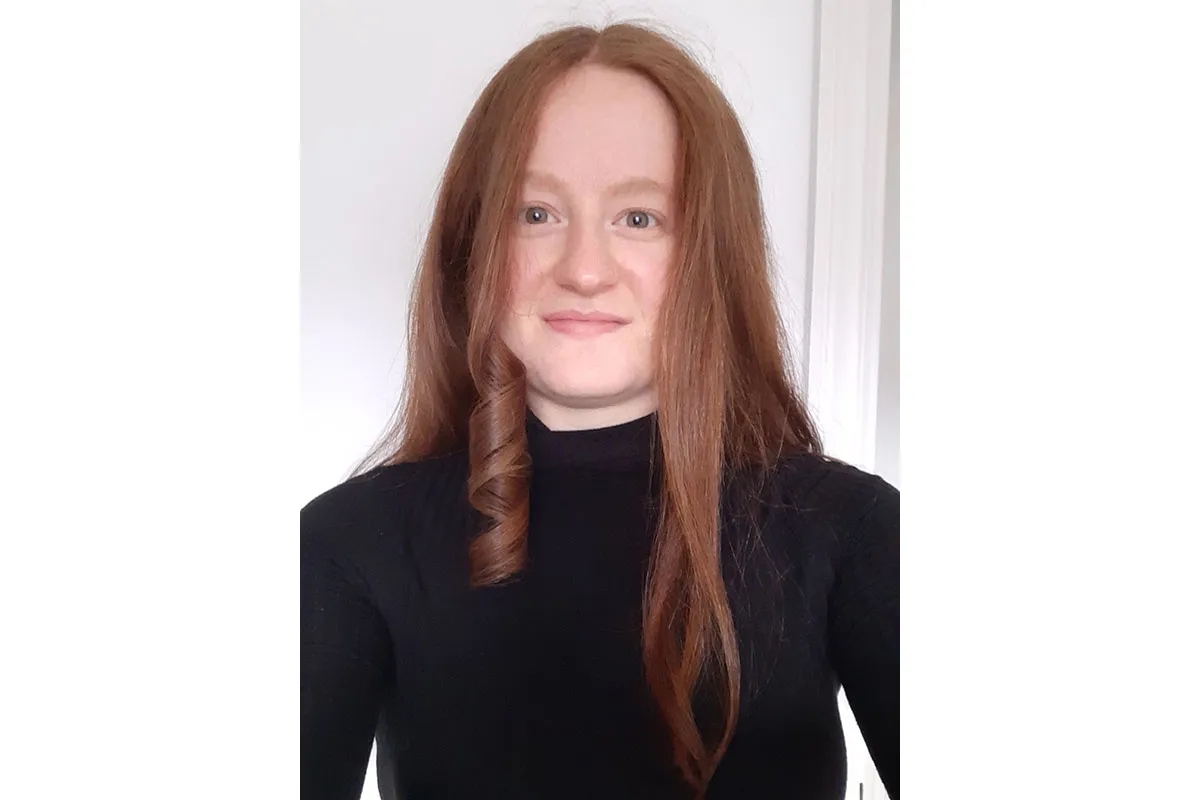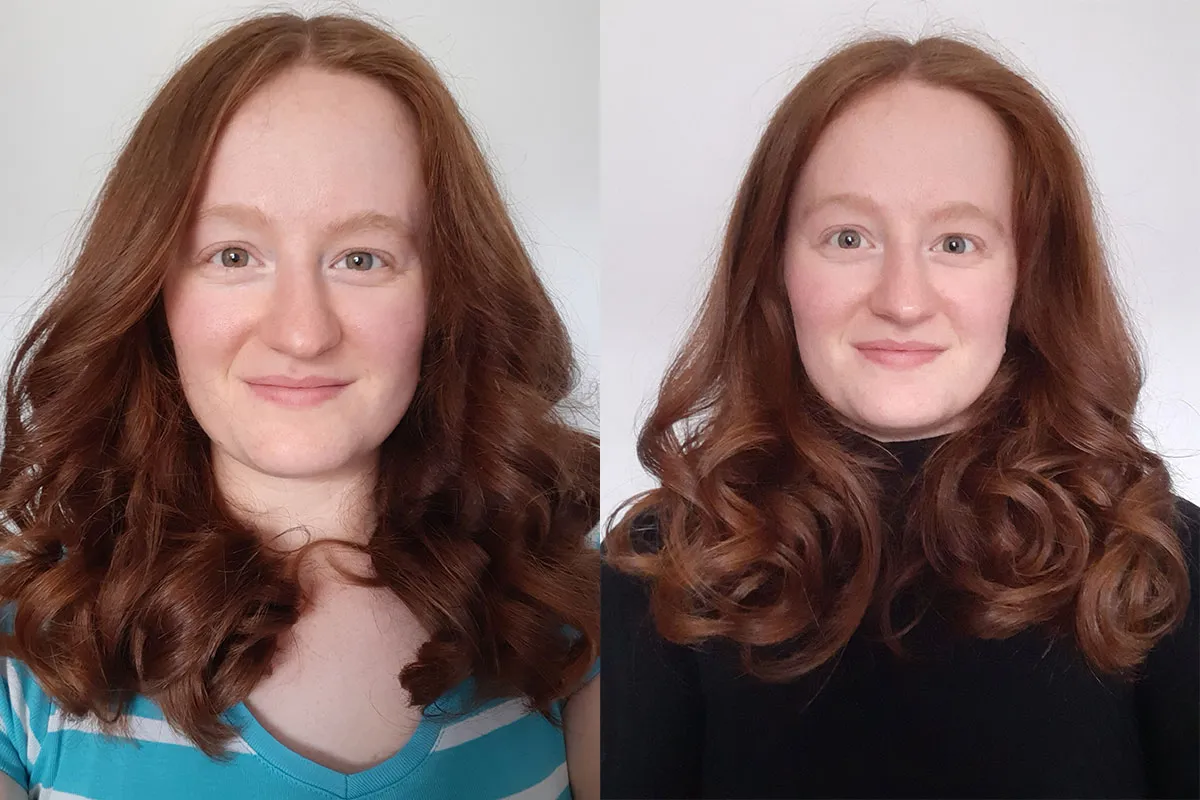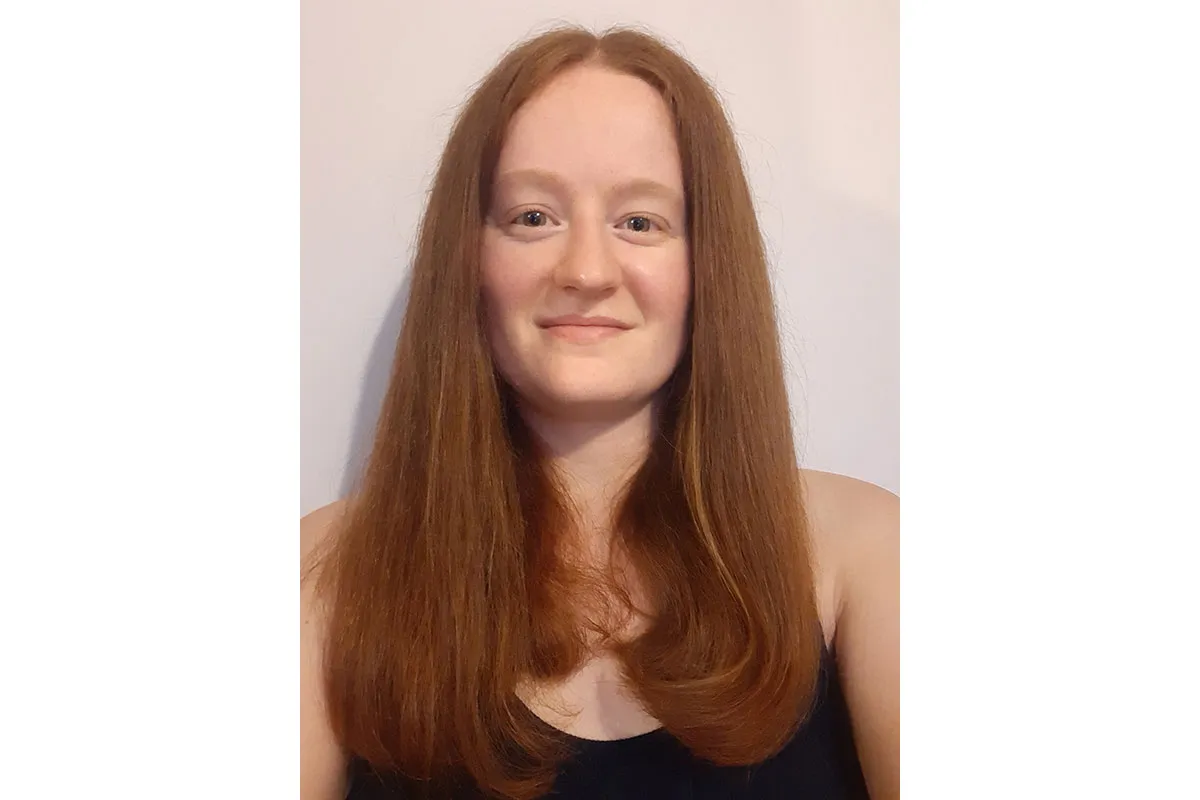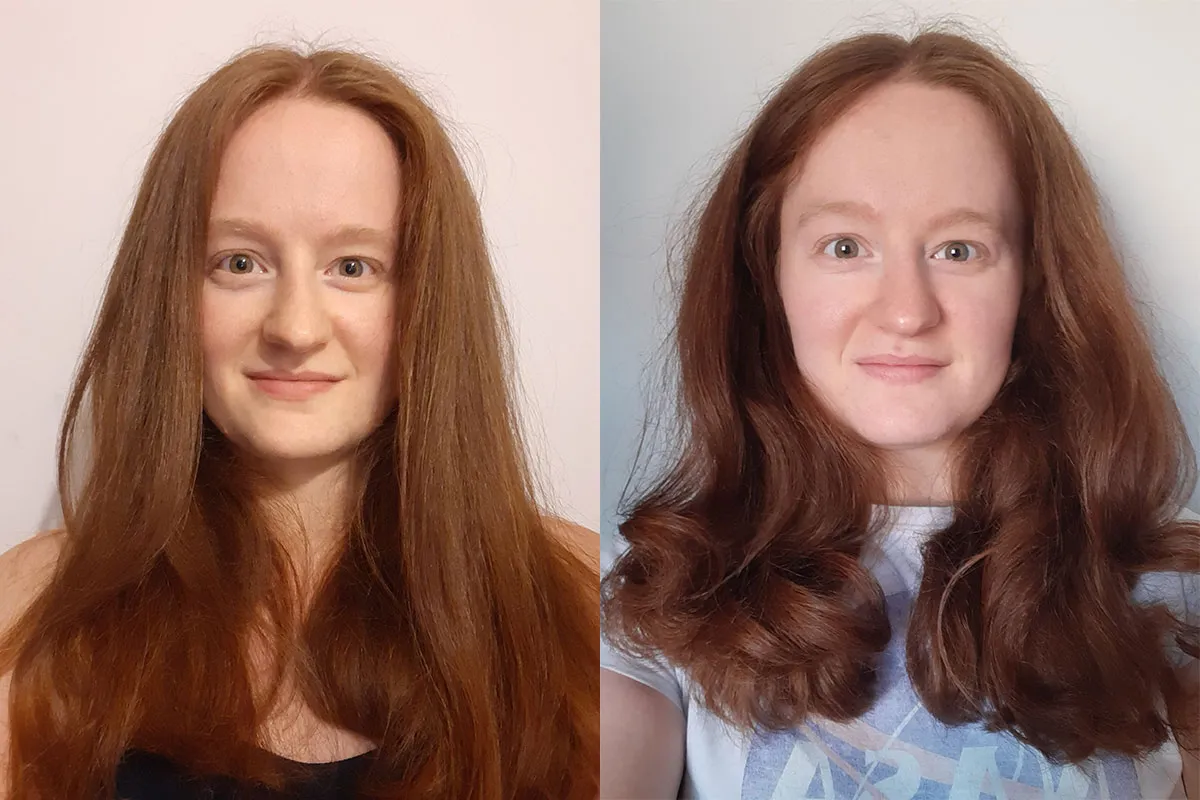SQUIRREL_13064297
Whether it's the hair dryer with no visible fan or the Corrale cordless straightener with flexible plates, I've always thought Dyson's top-of-the-range hair stylers look incredibly cool. The Airwrap hair styler takes that up a notch. If you've seen a video of a strand of hair wrapping itself around the Airwrap's curling barrel, you'll understand.
After well and truly scorching my hair by straightening it every day, and then swearing off heat altogether around the time the pandemic hit, my hair has finally recovered. So, I'm intrigued by what the Airwrap promises – styling without extreme heat. For those of you who know the lingo, my hair type is 2a/2b – gentle waves and loose curls, for those who don't. It's also on the longer and thicker side. All this means that blow-drying with my regular dryer usually leaves my hair quite frizzy.
Could the Dyson Airwrap and its Coandă effect technology really give mestraightened or curled hair without damaging it?
Dyson has recently released a new model, the Dyson Airwrap multi-styler. This model includes updated versions of the attachments, which it says reduce frizz and flyaways.
What is the Coandă effect?
The Coandă effect, named after Romanian inventor Henri Coandă, is the principle behind how the Dyson Airwrap curls hair. It describes the phenomenon in which a jet of air (or another fluid) will 'stick' to a curved surface.
The Dyson Airwrap uses the Coandă effect to attach the hair to the smoothing brush and Airwrap barrell attachments. This aims to shape and style hair with fewer flyaways.
What's in the box?
The Dyson Airwrap Complete comes with eight attachments in total: a pre-styling dryer, a pair of 40mm Airwrap barrels, a pair of 30mm Airwrap barrels, firm and soft smoothing brushes, and a round volumising brush. The two barrels in the pair are for alternating curl direction, with arrows showing the direction of the airflow. It also comes with a tan leather storage case. The case feels high-quality, but it's big, and with no carrying handle, it's a bit unwieldy.
For long or short hair, you can instead choose a different set of accessories: longer barrels for long hair, or narrower brushes for short hair.
If you're planning on taking your Airwrap away with you a lot, you might consider investing in the travel pouch, which is heat-resistant and holds three attachments.
Using the Dyson Airwrap
The Airwrap feels like a luxury product. The plastic is high-quality and sturdy, and the attachments fit onto the body of the styler with a satisfying click, much like a Dyson vacuum.
Along with the eight different attachments, the settings provide even more customisability. You can choose one of three fan speeds, and four temperatures, one of which is for a shot of cold air to set your hair in shape.
The attachments can be fitted to point in more than one direction – e.g. the brush pointing towards or away from the side with the switches. You may want to experiment with the direction that feels most comfortable to you. I found that, sometimes, having my hand on the same side as the switches meant I would accidentally change the heat or fan setting. With my hand on the opposite side, I would sometimes struggle to reach the cold shot.
The body of the styler is quite big and slightly heavy. I have fairly small hands, and while I can hold the Airwrap comfortably, I start to feel the strain after an extended period – particularly if I'm gripping the device tightly to introduce tension.
30mm and 40mm Airwrap barrels

The first thing I tried, obviously, was curling my hair with the almost-magical Airwrap barrels. There are two different widths of barrel, with the narrower one designed for tighter curls. I started with the wider ones.
I washed my hair, and then dried it most of the way with the dryer attachment. Then, I tied up the top section of my hair and started with the bottom section. As well as being a good idea for hair styling in general, separating and starting with the underside of my hair gave me a few practice tries to get the hang of the technique before I started on the more visible top layer.
And oh, I needed it. Curling with the Airwrap is not nearly as easy as they make it look in the videos. I got the hang of it with practice, but even after curling it maybe five times, I still mess up some strands and have to redo them.
It works best with smaller strands: if, like me, you get impatient and take a larger chunk, the hair is liable to rise up off the top of the barrel and get twisted. That said, my hair is potentially a bit long for the regular barrels, and I'd get on better with the longer ones. This is also evidenced by the fact that if the strand was too thick, the ends could sometimes lose contact and come off the bottom.
When it works, though, the results are impressive – and really fun, too.

For me, the most successful technique was as follows: take a small segment of hair on the left side of my head, say, and hold it in my right hand around 10cm up from the end. With the styler in my left hand, I'd then bring the hair towards the barrel so that the strand points along the direction of the arrows (showing the direction of airflow). When the free end has wrapped itself around, I'd then move the styler so the hair was horizontal, and then slowly move it towards my head to allow the rest of the hair to wrap onto the barrel.
Once the whole strand was wrapped, I'd hold it there while I counted to 10 or 15, depending on how damp the strand was, and then follow it up with a five-second cold shot. Then, I'd turn off the device and pull it out vertically to release the curl.
When it comes off the barrel, the curl is very tight. It relaxes over time, and by the time I've finished my whole head, flipped it upside down and gently loosened with my fingers, the curls would fall to the ends with the roots being smooth and straight. I never managed to create the bouncy curls from root to end like Dyson show in their instruction videos, but maybe I skimped a little on the heat for fear of damage. Either way, I was very happy with the results.
Firm and soft smoothing brush

The firm and soft smoothing brushes are intended to replicate a salon blow-dry. These two brushes use the Coandă effect to attract the hair to the brush and blow hot air over it to dry.
They are easy to use: all you have to do is brush them slowly through your hair under tension.
After drying and shaping my hair with these attachments, it feels incredibly soft and smooth, and is straightened as well as I ever managed with my straighteners. The only stumbling point I found was that brushing from the inside at the end to curl the ends under would create a bit of frizz. This is manageable, though – I just had to brush the ends again from the outside, while being careful not to go all the way through to the ends.
Once, I dried half my hair with my old faithful hair dryer, and the other half with the soft smoothing brush. The half I'd done with the Airwrap was visibly shinier, straighter, and less frizzy, and softer to the touch. It was straighter, and in particular I didn't have any of the wavy underside that I can't avoid with my dryer.
Undeniably my favourite thing about the Airwrap is how easy it is to tidy up my hair with the smoothing brushes. I'm an evening shower person, so even if I've styled it immaculately while drying it, it's never as neat the next morning. But with the Airwrap, I can spend 10 minutes giving it a once-over with the smoothing brushes and get rid of any ponytail lines and frizz that has cropped up overnight, and have it looking presentable for work.
Round volumising brush

Of all the features of the Airwrap, I was least impressed by the round volumising brush. I tried two different styles with it, and I struggled to get any good results. It's possible that it's a problem with my technique, but I think there may be a design flaw at work.
Generally, when you use a round brush while blow-drying, you'll blow down onto your hair with a dryer. However, with this attachment, the air comes from the centre of brush. There's no Coandă technology here – the airflow is straight outwards.
I think this is why, when I tried to follow Dyson's instructions for voluminous waves, most of the volume I managed to create was in the form of frizz. The fact that my hair stuck to the bristles and pulled the curl out of shape when I tried to unwind it didn't help. What I ended up with was mostly uneven and funny-shaped curls. It did look better after I'd allowed it to settle, but it was still quite frizzy, and I personally prefer just using the Airwrap barrels.
I also tried introducing some volume after straightening it with the smoothing brushes. I did manage a bit of shape and a bit of lift at the roots, but this fell out again after it settled.
Will the Dyson Airwrap damage my hair?
Dyson claims it uses no extreme heat – but will the Airwrap damage my hair? Some people believe any heat at all will damage your hair eventually (with some curly hair guides even advising you not to have your shower too hot), whereas others recommend a certain temperature below which heat styling is safe. Dyson claims that damage only occurs over 300ºF (150ºC), and that the Airwrap measures the temperature 40 times a second to keep it below this.
I've used the Airwrap for a little under three weeks now, and while I can't say how it will affect my hair in the long-run, I do feel a lot more comfortable straightening regularly with the Airwrap than with traditional straighteners.
Is the Dyson Airwrap worth it?
All in all, I love the Dyson Airwrap. The curling technique is a bit fiddly, but I'm a big fan of the results. There's also a bit of versatility: you can experiment with alternating curl direction for a more casual look, using a mix of wide and narrow barrels to make it look more natural, and changing how much of your hair you wrap and for how long.
The smoothing brushes work really well on my hair, and with little effort. While I would use the curling barrels for an evening out or a special occasion, I can see myself using the smoothing brushes regularly to tame my sometimes unruly hair.
Whether the Airwrap is worth it for you comes down to how often you style your hair, and how. It's not a cheap device, and if you would only use it for occasional styling, then there are plenty of alternative products for heatless curls. But if you straighten or style your hair every day, then the high-quality results and (in theory) protection from heat damage would make this a worthwhile investment.
SQUIRREL_13064297
Alternatives to the Dyson Airwrap
BaByliss Air Style 1000

The BaByliss Air Style 1000 uses hot air to style, like the Airwrap, but without the Coandă effect technology to wrap your hair and hold it in place. You do this by hand instead, using the heatproof glove provided. With the four attachments, you can dry your hair for styling with the nozzle, blow-dry with the paddle brush, volumise with the round brush and curl with the conical barrel.
The Air Style 1000 is much more affordable than the Airwrap, but the trade-off is that BaByliss don't promise to keep the temperature cool.
Revamp Progloss Airstyle 6-in-1 Air Styler

Like the BaByliss, the Progloss Airstyle from Revamp uses hot air to style, but without Coandă effect technology. However, this one comes with two extra features: a diffuser head for curly hair, and a rotating air brush for introducing waves and soft curls.
Read more reviews:
- DJI Mini 3 Pro review: A tiny drone packed with huge power
- JLab Go Air Sport True headphones review: Cheap running headphones with a surprising punch
- Samsung Galaxy S22 Ultra review: With great power comes great financial responsibility
- Sage Fast Slow Pro: Can this pressure cooker-slow cooker revolutionise weeknight dinners?